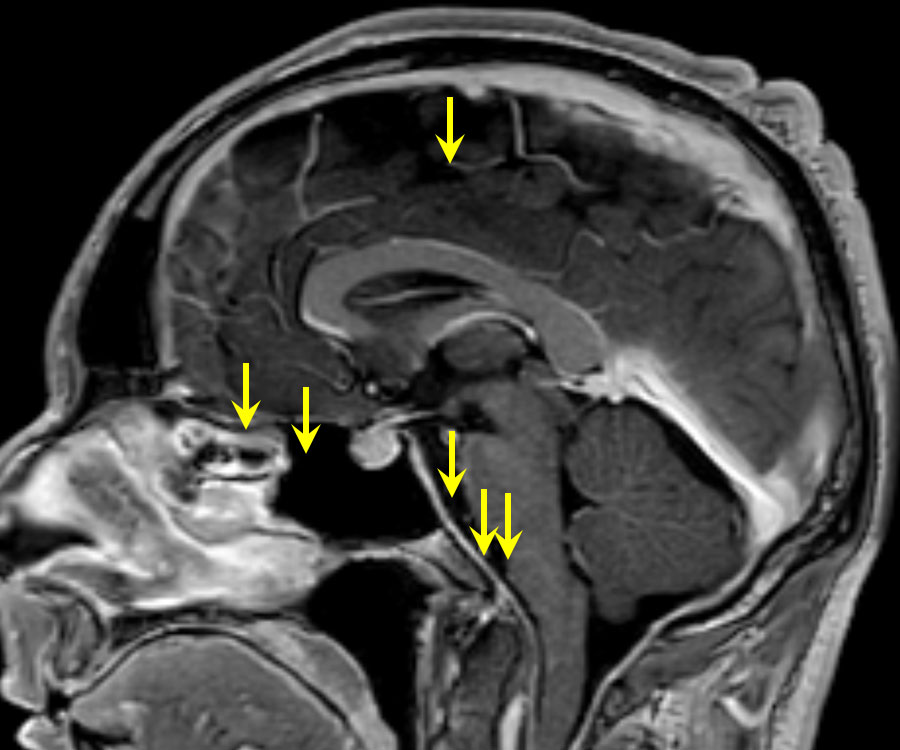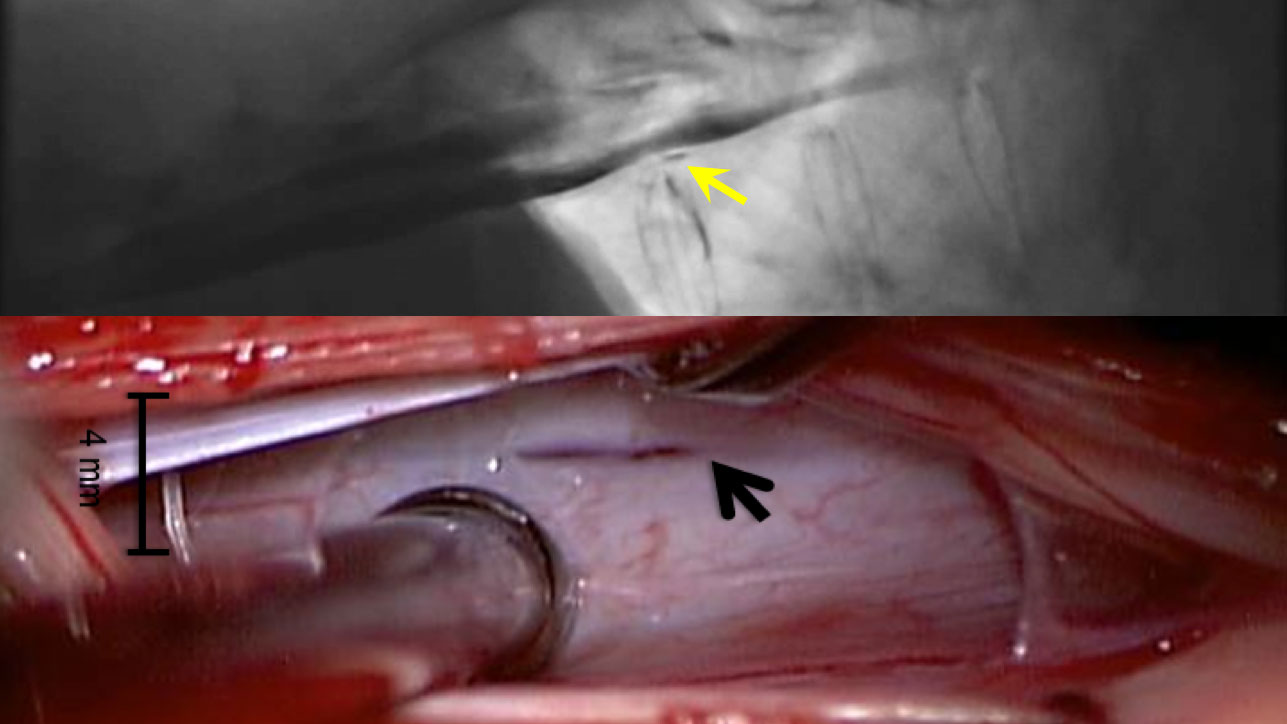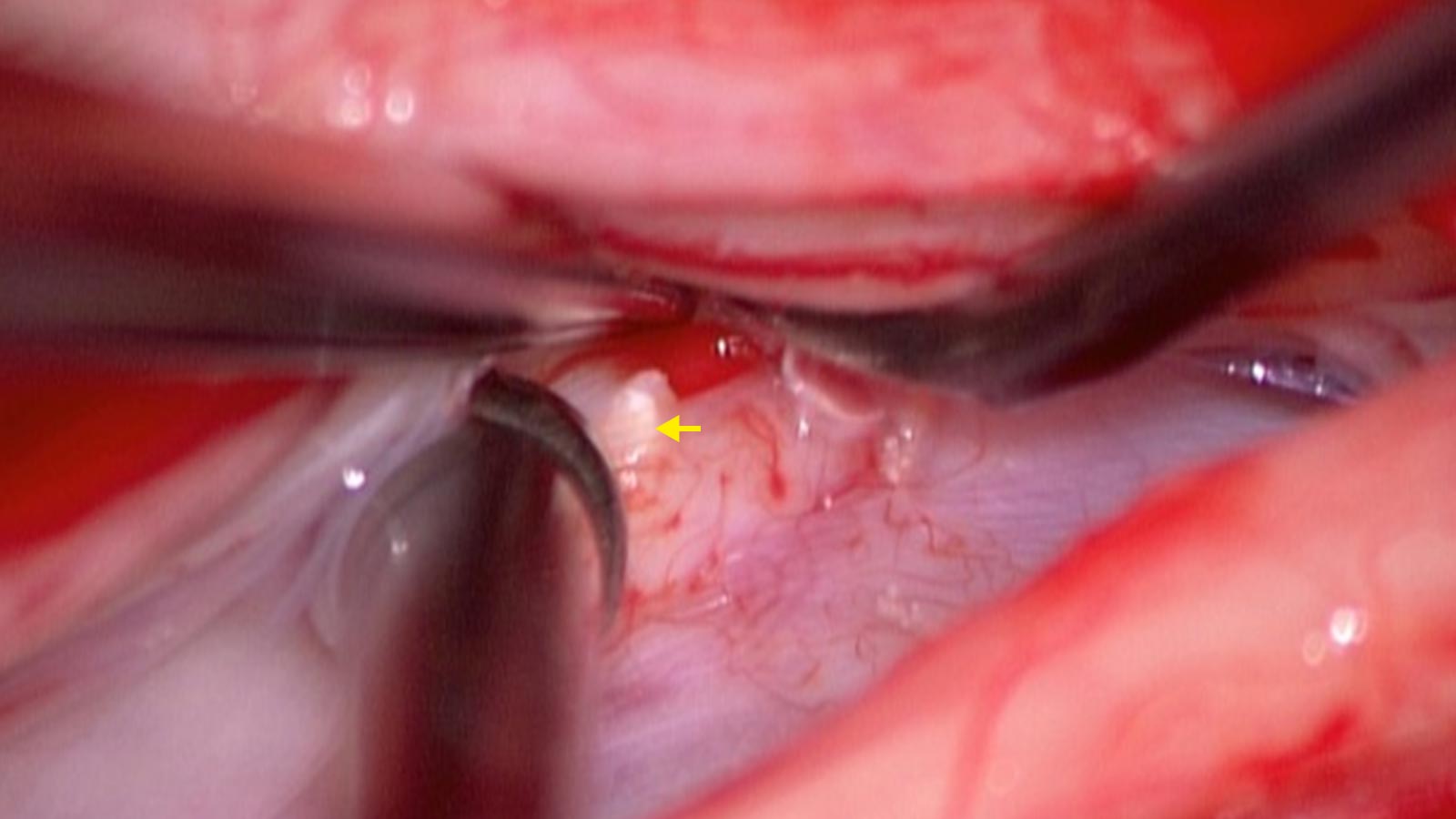A cerebrospinal fluid leak or short CSF leak causes headaches in patients when they are in an upright position. Spontaneous recovery is common. However, if symptoms persist unchanged after 3–4 weeks, a special evaluation is needed. If this reveals the exact location of the leak, surgical occlusion should be performed, because otherwise the headache may progress to a chronic stage. Timely diagnosis and therapy are therefore very important.
What is special about a CSF leak?
A cerebrospinal fluid leak is not a new, but an increasingly frequently diagnosed condition. The most important symptom is orthostatic headache - that is, a headache that begins immediately after changing position to a more upright position (from lying to standing or from lying to sitting) and improves rapidly after lying down. Most often, CSF is lost through an unnoticed defect in the meninges of the spinal cord, the spinal dura.
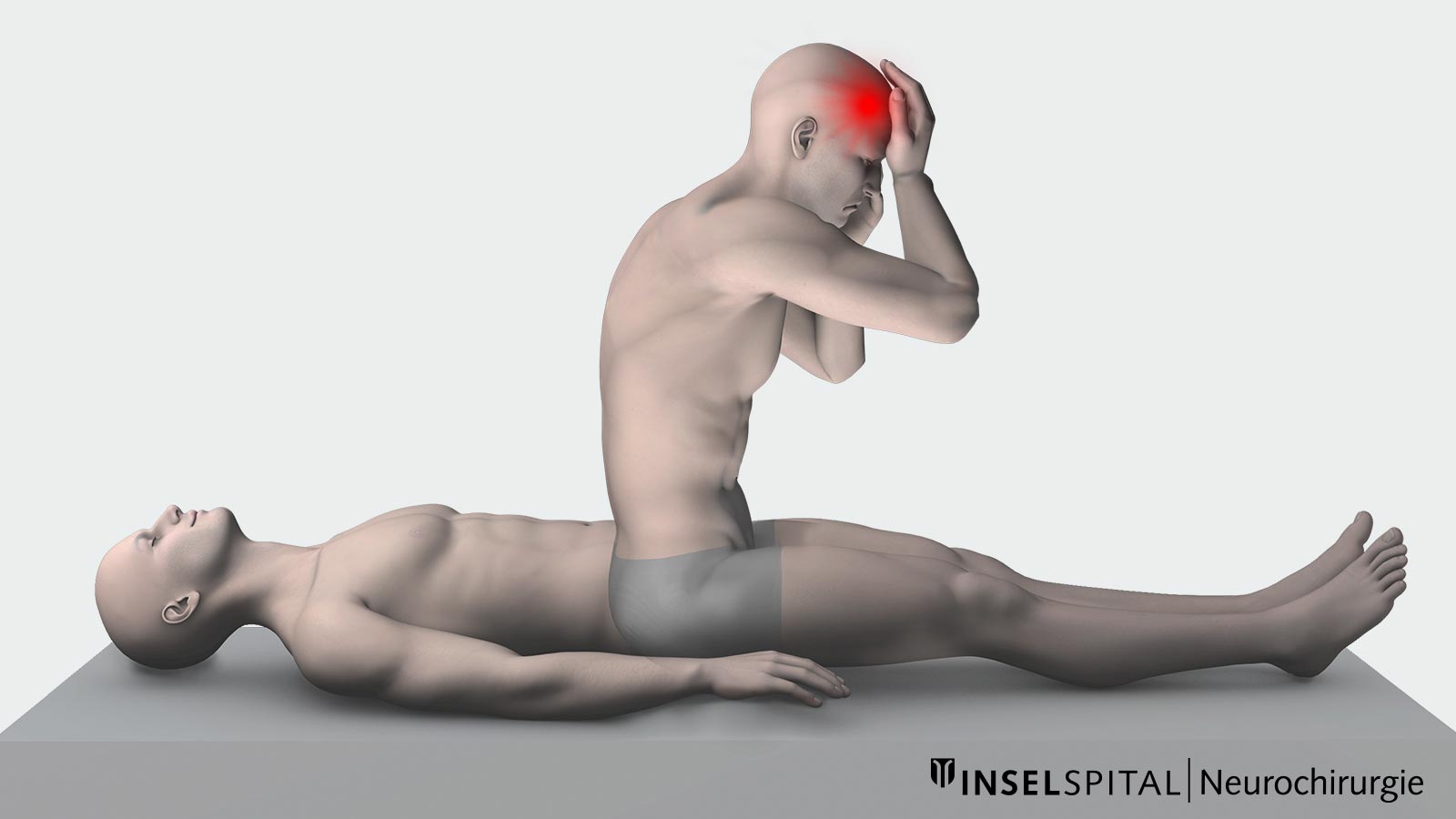
Synonyms
There are numerous English and German names and abbreviations for the disease. The official name is spontaneous intracranial hypotension (SIH). Other names are listed here:
| Cerebrospinal fluid hypotension syndrome | Low-ICP syndrome | Spinal headache |
| Hypoliquorrhea syndrome | CSFL | Orthostatic headache syndrome |
| Spinal cerebrospinal fluid leak syndrome | Low pressure headache | Spontaneous spinal CSF fistula |
What causes a CSF leak?
The cause is a spinal CSF fistula, but the cardinal symptom is orthostatic headache. The cause is in the back, but the complaints and symptoms are manifested in the head.
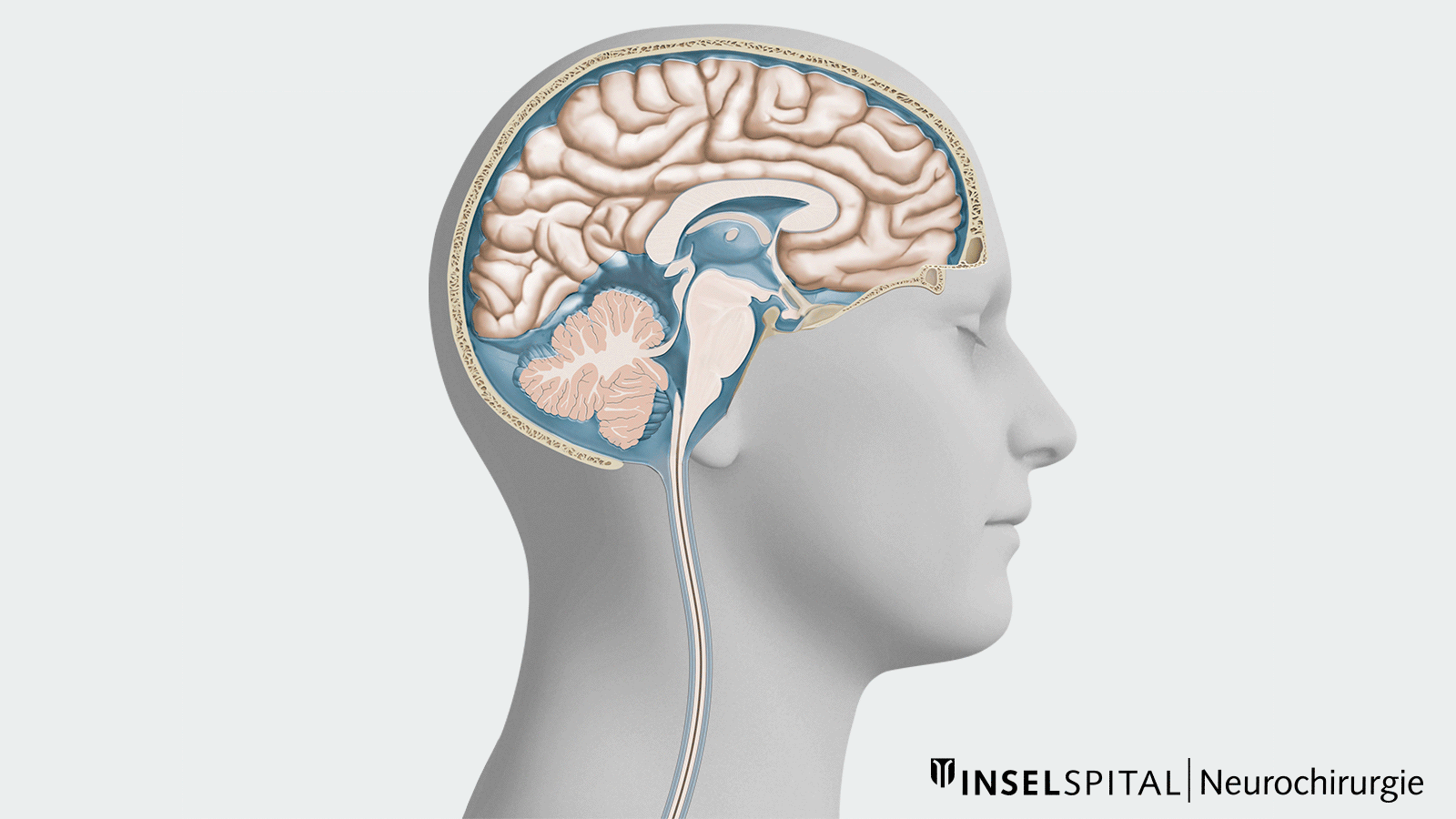
The brain and spinal cord "swim" embedded and well protected against vibrations in about 140 ml of cerebrospinal fluid, also called brain or nerve fluid. About 500 ml of this fluid is newly formed and also broken down again every day. The meninges of the brain and spinal cord make this closed system virtually "watertight".
A small tear in the spinal cord skin leads to leakage of CSF into the spinal canal and from there into soft tissues such as muscles and fatty tissue. In very rare cases, there are also vascular connections from which the CSF directly enters the venous system.
Causes for a small tear of the spinal dura and for CSF leak may be:
- violent coughing or sneezing attacks
- minor injuries such as bruises, sprains or abrasions
- strong, abrupt movements
- a sharp bone spur on the spine that bores a hole in the skin of the spinal cord. A bone spur occurs, for example, due to wear and tear when joints or vertebrae rub against each other
The loss of cerebrospinal fluid is most noticeable in the upright position and hardly ever in the supine position. When a patient stands up, cerebrospinal fluid is drained again, and the already small amount of cerebrospinal fluid shifts toward the spine and is then missing from the head. The brain now no longer floats in the water, but rests on the base of the skull and deforms. If the patient lies down again, the water shifts back toward the head. This explains why patients have discomfort in an upright posture, especially when standing, and feel relief from the headache when they lie down again.
What are the symptoms of a CSF leak?
When standing, the brain sags into the bony skull. The spectrum of symptoms caused by this is very wide. It ranges from mild headaches at the end of the day to massive discomfort only seconds after standing up.
The pull on the meninges and vessels causes headaches, sometimes also nausea, dizziness, sensitivity to light and noise. If cranial nerves and pituitary stalk are involved by the pull, this can also cause symptoms: double vision, visual disturbances, cardiac arrhythmias, hearing disturbances, etc. In extreme cases, consciousness is affected.
A hygroma, the accumulation of fluid between the meninges of the skull, can also be a consequence of the sagging of the brain. As a feared complication, bleeding in these spaces, so-called subdural hematomas, can also occur.
This is how patients describe the unusual symptoms
- "A shooting pain from the top of my head down the back of my neck."
- "I felt like I was drunk."
- "I was unable to get out of bed or even lift my head a little. "
- "Everything was ringing, I felt like I was inside a box."
- "A dull feeling like being underwater."
- "I was like a paraplegic."
How is a CSF leak diagnosed?
Due to the symptoms, the affected patients usually undergo an imaging procedure such as magnetic resonance imaging (MRI). According to the assessment scheme developed by us (PDF), 6 indirect signs of CSF hypotension syndrome can be observed:
- Contrast enhancement of the dura
- Subdural fluid accumulation (subdural hematomas and hygromas)
- Congestion (buildup) of the large venous structures
- Hyperemia of the pituitary gland leads to reduction of the suprasellar cistern (< 4 mm).
- Resting of the brainstem on the skull base: reduction of the prepontine cistern (< 5 mm)
- Subsidence of the brainstem: small mamillopontine distance (< 6.5 mm)
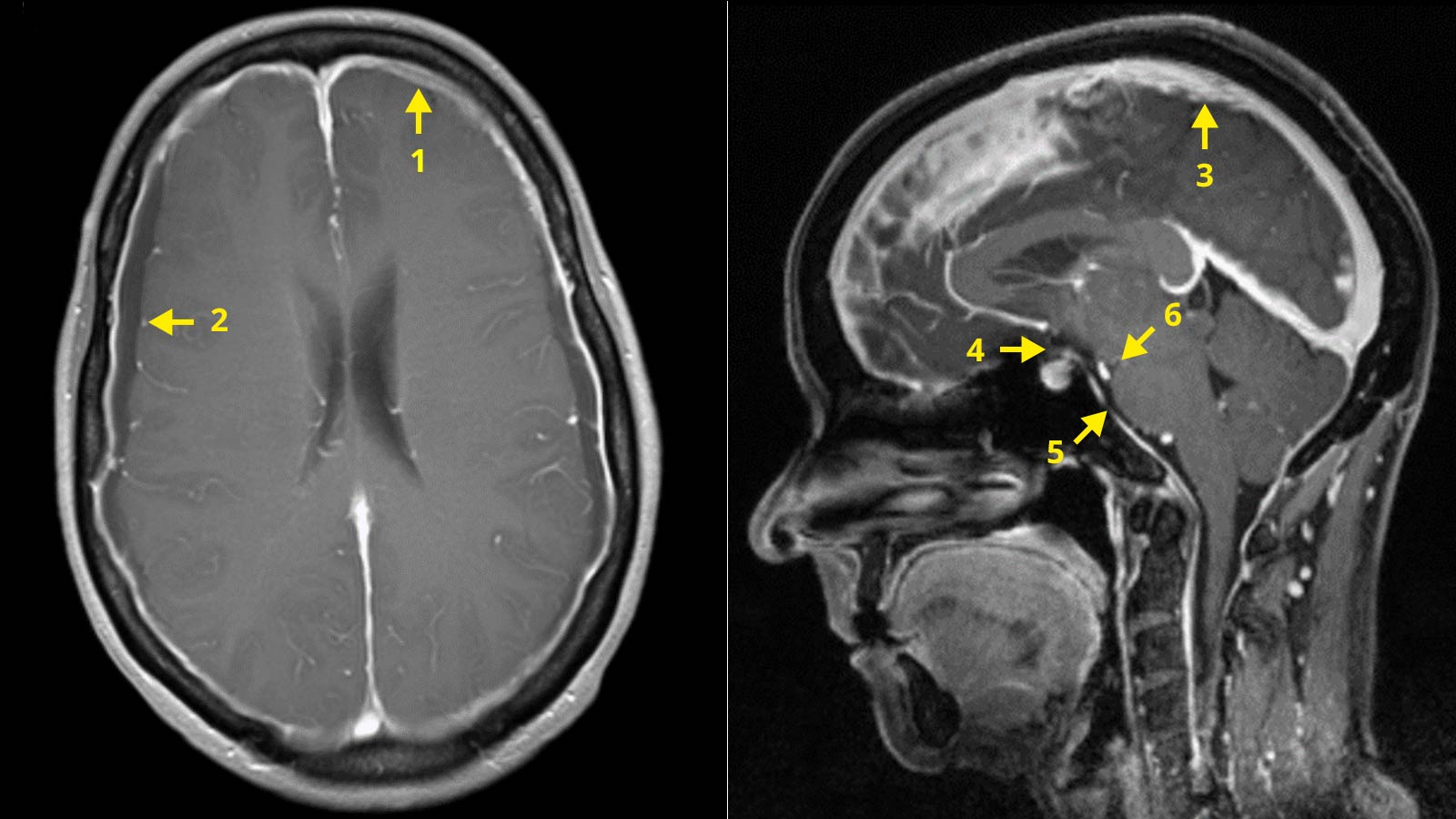
Based on these criteria, the probability of the presence of CSF leak can be calculated and classified as "low", "intermediate" or "high". Even these secondary signs of the disease (the cause is a tear in the spinal meninges in the back and not in the head itself) can be easily explained by thinking of the outflow of CSF and the brain then subsiding while standing.
What are the challenges in diagnosing this disease?
The initial question is: Is cerebrospinal fluid actually leaking through a crack in the dura?
This first needs to be confirmed with certainty. This is usually done by magnetic resonance imaging (MRI). If the findings are negative, a myelography, i.e. a radiological contrast image of the spinal canal, is performed. In addition to conventional myelography, a combination with myelo-computed tomography (myelo-CT) is also possible. If direct detection is not possible, the diagnosis can be confirmed indirectly using other methods, such as ultrasound of the optic nerve or measurement of the outflow resistance of the CSF. In this way, one knows with relative certainty that CSF is really draining.
The second question is even more important: Where exactly is the CSF fistula located, i.e. the defect in the dura from which the CSF escapes?
The most challenging part is actually finding this tiny tear and localizing it to the millimeter throughout the spine. It is precisely at this point that many examinations in other clinics fail, since conventional examinations usually conceal the leak. In addition, there are so-called "false-localizing signs", i.e. signs that are misleading.
We have developed a special step-by-step diagnostic protocol at Inselspital to answer both questions, which is performed with enormous care and in a highly standardized manner by a specialized and experienced neuroradiologist. Depending on the findings, individual steps can be skipped or additional examinations can be ordered.
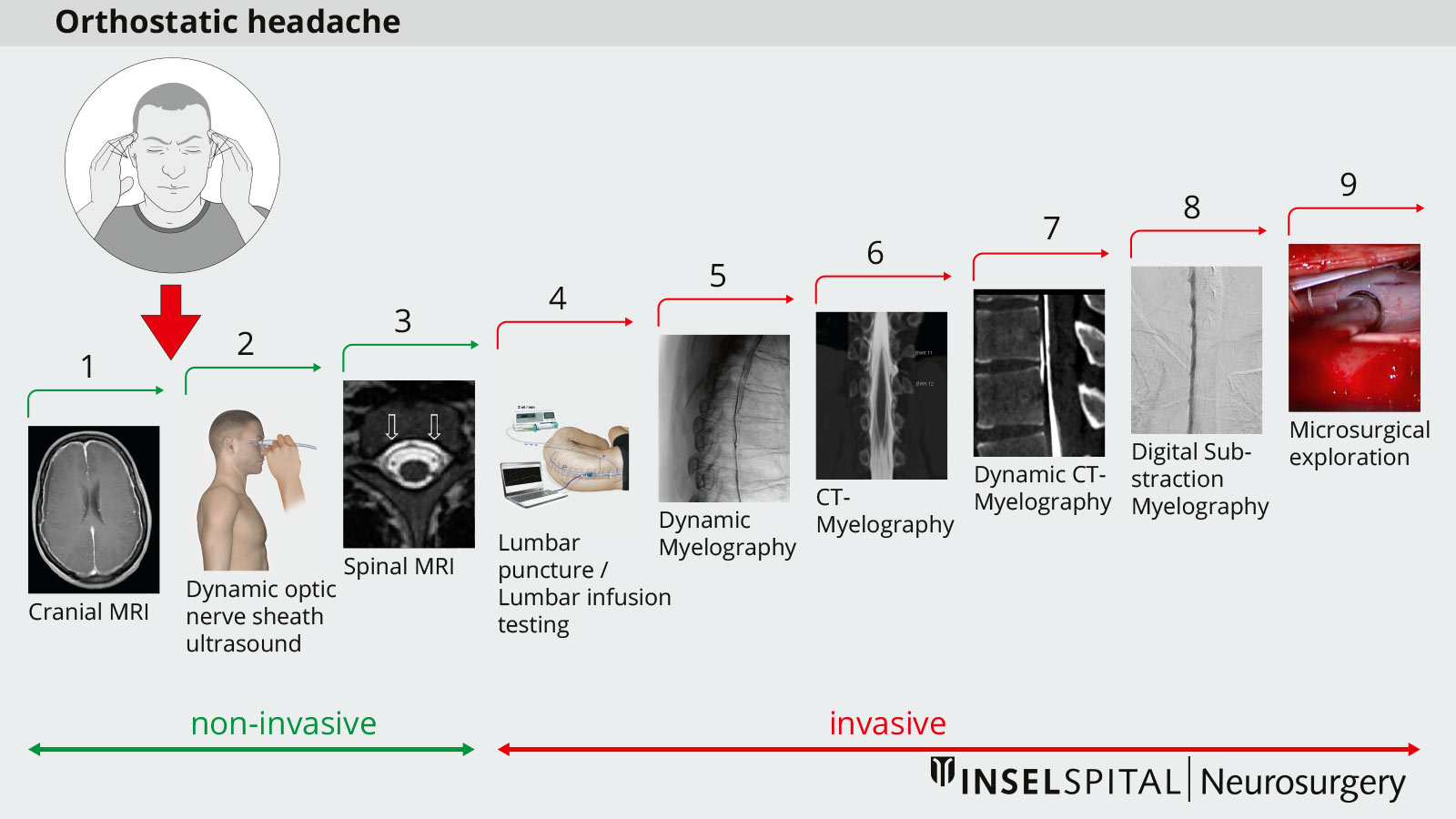
- Special sequences of cranial and spinal MRI
- Dynamic (standing and lying) ultrasound examination of the optic sheath
- Spinal MRI with intrathecal contrast imaging (in selected cases)
- Lumbar puncture with opening pressure and computerized infusion test.
- Dynamic myelography with special tilting table, if necessary intubated as digital subtraction myelography
- Post-myelo computed tomography with early images and late images if necessary
- Dynamic myelo-computed tomography of the target region with special technique *
- Digital subtraction myelography
- Microsurgical exploration
How is a CSF leak treated?
- Bed rest and caffeine (only during the initial stage for a few days).
- Blood patch (2–3 times)
- Surgery
Blood patch
If no spontaneous closure of the CSF fistula occurs through bed rest, the next step is a so-called blood patch. In this procedure, the patient's own blood, which was taken from a vein shortly beforehand, is injected into the space around the spinal cord membranes (epidural space). The blood patch is usually applied to the lower back at the level of the 3rd/4th lumbar vertebra. If necessary, the treatment is repeated. The effect of the blood patch comes not from gluing the hole shut, but from compressing the dural sac, which prevents as much cerebrospinal fluid from flowing from the head into the spinal dural sac when the patient stands up or sits down. In the short term, therefore, a blood patch nearly always improves symptoms, even if it is placed far from the leak. This minimally invasive procedure is very often successful.
If relief from symptoms is not achieved even after 2 blood patch treatments, surgical closure of the CSF leak should be performed because otherwise the headache may progress to a chronic stage with increasing involvement of cranial nerves and more severe vegetative symptoms.
What is the surgical procedure for a CSF leak?
If the CSF leak does not close after bed rest and blood patch, or in cases of large fistulas with significant symptoms, the CSF fistula is closed surgically.
We have developed a standardized microsurgical technique for closure at Inselspital based on our experience. A 5 cm skin incision is used to perform a unilateral fenestration in the vertebral arch, leaving the vertebral process and the opposite side intact. Our specialists at Inselspital have shown that, contrary to previous assumptions, the defect is located in the vast majority of cases as a tear of 2–3 mm in front of the spinal cord *. DThe tear is often caused by a bone spur.
For monitoring and protection of spinal cord functions, our patients are continuously monitored during surgery by special spinal cord neuromonitoring. The endoscope and a fluorescent dye help locate the leak. By suturing and taping the tear in the spinal cord skin, the fistula is closed and can grow closed again..
What determines the success of the procedure?
A prerequisite for surgical treatment is the preceding exact localization of the fistula. Microsurgical treatment is then very successful. As a rule, the symptoms improve significantly immediately after the procedure or have disappeared completely. Treatment at the chronic stage is more difficult, but possible. Chronic CSF loss and surgical closure of the leak may result in scarring of nerves, and temporary or permanent CSF excess pressure may remain because the body's own breakdown of the cerebrospinal fluid has already partially atrophied. Therefore, timely diagnosis and surgical therapy is important, especially if there is no improvement after blood patch treatment.
What are the complications of this procedure?
Given the surgeon's proven microsurgical experience on the spinal cord and special functional monitoring during the operation, the complication rate is very low. The success rate for sealing is high, nevertheless in about 6% of patients a second operation has to be performed to close the leak completely watertight.
Inselspital is one of the three largest centers in Europe in the special field of cerebrospinal fluid leaks and has a great deal of experience.
Over the last few years, we have therefore been able to gain important insights into the decoding of this rare disease:
- Diagnosis is often misunderstood. The specific methods of diagnosis and the staging scheme are often not known.
- CSF leaks are often benign and have a high spontaneous healing rate. However, if closure of the dural leak does not occur relatively quickly (spontaneously or by surgery), or if the cause is a dural slit due to a microspur, a chronic clinical picture may develop in which the symptoms change, spread, and lead to complaints that are atypical and often wrongly classified as "psychogenic." Severe symptoms can be expected, ranging from severe impairment to practical bedriddenness.
- Not all leaks are the same. After lumbar puncture, the chance of spontaneous healing is almost 100%, but in the case of dura tear because of a mini-spur, it is significantly lower.
- Many clinics perform an evaluation without finding the leak. If symptoms persist, it is imperative to continue looking for the leak. A second or third diagnostic round may also be necessary in our clinic, with multiple MRIs and myelographies to diagnose or rule out the disease.
- Two specialized teams or physicians are needed: for precise neuroradiological diagnostics and for surgery. In both cases, the mini-leak must be searched for carefully and with great effort; it is almost always "hidden". Detection takes a lot of experience and intuition.
- The first milestone is to confirm the diagnosis by detecting CSF outside the dura sac. The second milestone is to locate exactly where the leak occurs. Only then is targeted surgery possible. Both are complicated and not always successful.
- The most common cause of CSF leak is a 2–3 mm dural slit anterior to the spinal cord, often bored into the nerve sheath by a tiny bone spur, a calcified disc process. Second most common cause, but much less common, are root pocket cysts.
- Once the cause is established and the fistula is localized, no additional bed rest should be prescribed and no additional blood patch should be administered. Instead, surgery should be performed without further delay.
- After successful surgical intervention, the symptoms improve immediately. However, in 6% of cases, symptoms recur within the first weeks after surgery. A recurrence of this kind necessitates a new operation to close the leak 100%.
- After a prolonged chronic course, symptoms may persist or a new "hypertensive headache" may develop, because the normal CSF resorption pathways have atrophied and the cerebrospinal fluid is no longer drained to the same extent as before. However, this condition often improves spontaneously, and only rarely does shunt surgery have to be performed for artificial drainage.
- On rare occasions, there are also special forms of cerebrospinal fluid loss in which the cerebrospinal fluid "sags" in large root pocket cysts or an excessively large spinal dural sac and in which the conventional symptoms occur. Treatment then consists of reducing the volume of the dural sac accordingly.
- Further reading
-
Cipriani D, Rodriguez B, Häni L, Zimmermann R, Fichtner J, Ulrich CT, Raabe A, Beck J, Z'Graggen WJ. Postural changes in optic nerve and optic nerve sheath diameters in postural orthostatic tachycardia syndrome and spontaneous intracranial hypotension: A cohort study. PLoS One. 2019 Oct 9;14(10):e0223484.
-
Dobrocky T, Mosimann PJ, Zibold F, Mordasini P, Raabe A, Ulrich CT, et al. Cryptogenic Cerebrospinal Fluid Leaks in Spontaneous Intracranial Hypotension: Role of Dynamic CT Myelography. Radiology, 289(3), 766–772.
-
Beck J, Raabe A, Schievink WI, et al. Posterior Approach and Spinal Cord Release for 360° Repair of Dural Defects in Spontaneous Intracranial Hypotension. Neurosurgery. 2019;84(6):E345-E351.

